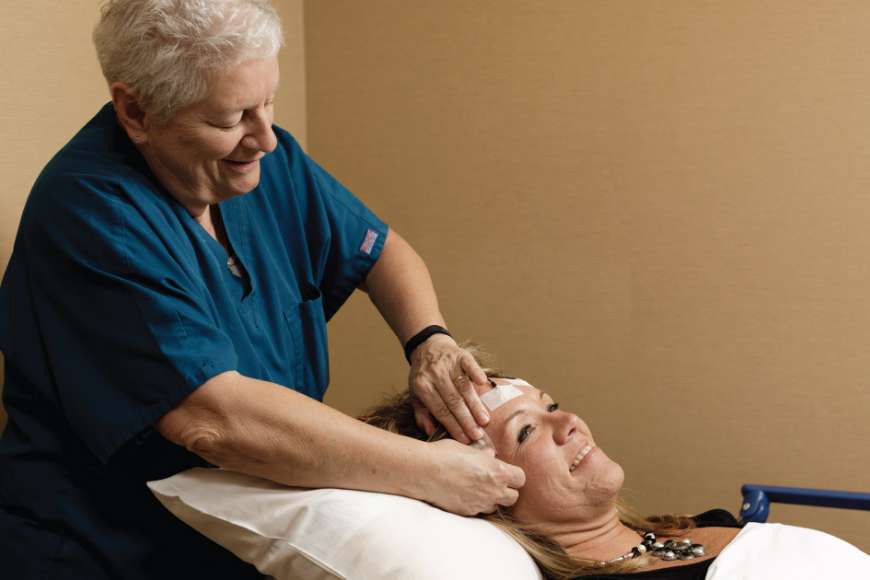Electroencephalography (EEG)
Checking Brain Waves
EEG is the name commonly used for electroencephalography (e-LEK-tro-en-SEF-uh-LOG-rah-fee). EEG is an important test for diagnosing epilepsy because it records the electrical activity of the brain.
- It is safe and painless.
- Electrodes (small, metal, cup-shaped disks) are attached to your scalp and connected by wires to an electrical box. (The wires can only record electrical activity; they do not deliver any electrical current to your scalp.) The box in turn is connected to an EEG machine.
- The EEG machine records your brain's electrical activity as a series of squiggles called traces. Each trace corresponds to a different region of the brain. EEGs were once only recorded on paper, but computerized, paperless EEGs are now used more often.
What Can The EEG Show?
The EEG shows patterns of normal or abnormal brain electrical activity. Some abnormal patterns may occur with a number of different conditions, not just seizures. For example, certain types of waves may be seen after head trauma, stroke, brain tumor, or seizures. A common example of this type is called "slowing," in which the rhythm of the brain waves is slower than would be expected for the patient's age and level of alertness.
- Certain other patterns indicate a tendency toward seizures. Your doctor may refer to these waves as "epileptiform abnormalities" or "epilepsy waves." They can look like spikes, sharp waves, and spike-and-wave discharges.
- If you have partial seizures, spikes and sharp waves on the EEG in a specific area of the brain, such as the a temporal lobe, can show where the seizures are coming from.
- Generalized epilepsy is suggested by spike-and-wave discharges that are widely spread over both side of the brain, especially if they begin in both sides at the same time.
Special Electrodes
If a routine EEG does not give your doctor all the necessary information, another EEG test with special types electrodes may be recommended.
- Sphenoidal (sfee-NOY-dle) electrodes are sometimes used during video-EEG monitoring. They are very thin wires that are placed into your cheek muscle near your jaw. These electrodes can record electrical activity from deep parts of the temporal and frontal lobes.
- To place the spenoidal elecctrodes a technologist or doctor will swab your cheek just below your jaw hinge with rubbing alcohol, and may apply an anesthetic (medicine that numbs the area). Then a thin needle, carrying a thin wire, is inserted into the cheek. The needle is removed, and the wire is taped to your skin. You may have a little discomfort that goes away.
- When the EEG monitoring is done, the thin electrode wire is removed.
- Nasopharyngeal (NAY-zo-fa-RIN-je-al) electrodes are sometimes used during EEG tests. They are plastic tubes with a wire inside that ends with a blunt metal tip. Nasopharyngeal electrodes can also record electrical activity deep in the brain. They are now being used less often, because they can be uncomfortable and regular electrodes often can provide the same information.
- The electrodes are inserted into the nose until the metal tip reaches the upper back part of the nose (the nasopharynx). They are left in place for about 20 or 30 minutes during the EEG test.
WE RECOMMEND
Resources
Epilepsy Centers
Epilepsy centers provide you with a team of specialists to help you diagnose your epilepsy and explore treatment options.
Epilepsy Medication
Find in-depth information on anti-seizure medications so you know what to ask your doctor.
Epilepsy and Seizures 24/7 Helpline
Call our Epilepsy and Seizures 24/7 Helpline and talk with an epilepsy information specialist or submit a question online.
Tools & Resources
Get information, tips, and more to help you manage your epilepsy.




